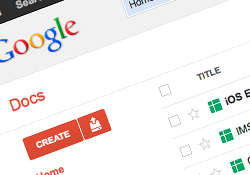The rise of online education has galloped in recent years, driven on by the developments and innovative advancements in internet services, software, apps and public awareness towards collaborative learning, communication, shared data, functionality, sharing of texts and the ability to collaborate on projects remotely.
Recently, I overheard one mother say: “Kids have it so easy these days with computers and mobile phones!” I believe what the mother was implying, from the context of the conversation, was that children and young people don’t have to work that hard to learn, that the computer/internet does the learning for them. It can be agreed that students are fortunate to have so much accessible worldwide information at their fingertips. However, in terms of ‘learning’, it is arguable that students still need to have the motivation, enthusiasm, aspirations and passion to learn in whatever learning environment they find themselves in. If technology is the key for students to be engaged and to fulfil their potential, then connecting education and technology must be the way forward. There is current and on-going research of how technology changes, how teachers teach, how technology improves the way learners learn, and how technology raises standards - although it may be some time before any results are available.
Previously, online education consisted of reading textbooks and gathering information. Text books are slowly being phased out and are being replaced by digital content distribution systems that allow users to access texts and learning materials online. Emergent technology is improving and becoming more accessible all the time. Today’s students have an extensive variety of tools at their disposal, including text chat, file sharing functions, immersive multi-media, virtual classrooms, digital whiteboards and access to the internet 24 hours a day, 7 days a week via a multitude of electronic devices that include laptops, netbooks, iPads, tablets and mobile phones. Current tools used in schools, such as the aforementioned, will be further streamlined by better cloud services. Educational establishments are likely to move towards cloud-hosted computing as developments in recent years are able to meet the operational needs of education. Cloud computing for many is still an enigma. Simply put, cloud computing is a general term for anything that involves delivering hosted services over the Internet. These services are broadly divided into three categories: Infrastructure, Platform and Software. It means that data, software and other resources are stored remotely so that they can be accessed whenever and wherever they are needed. It also means that every user can now have a scalable and nearly infinite set of resources available for whatever they need to do.
Social media has long been viewed as a mindless distraction but is now becoming more utilised to aid social learning tools and learning management systems. Digital content distribution systems, that do not have extensive hardware requirements, will be social and cloud-based enabling students to enrol onto a system which will allow them to share information and work together remotely. Access to the cloud and the content stored or shared will be managed and secured, rather than focusing on the device itself. Secure and up-to-date infrastructures are proving to be efficient, scalable and cost effective, whilst facilitating an increase in capacity and capability.
It is expected that online social media networks will build on the most popular sites. Jane Hart, of the UK’s Centre for Learning and Performance Technologies, recently assembled a list of the best resources for the past five years that were decided by a crowd-sourced vote. The five most popular tools were:
-
Twitter
-
YouTube
-
Google Docs / Drive
-
Skype
-
WordPress
Many of these trends are already surfacing in big ways in the education industry. The rise of technology is expected to continue and many of these tools will play big roles in how the perception of technology changes in schools and society.


















